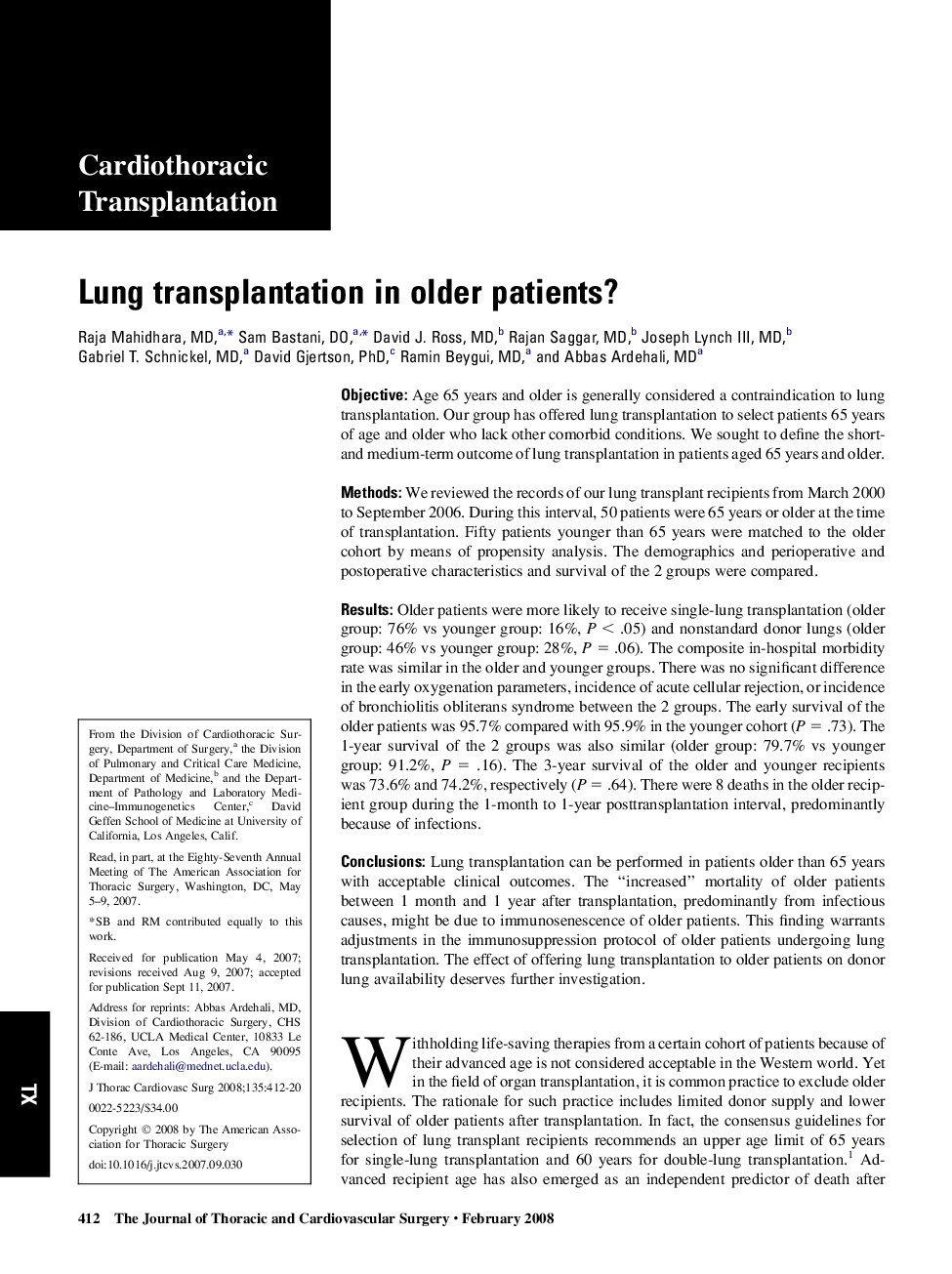| Article ID | Journal | Published Year | Pages | File Type |
|---|---|---|---|---|
| 2986370 | The Journal of Thoracic and Cardiovascular Surgery | 2008 | 9 Pages |
ObjectiveAge 65 years and older is generally considered a contraindication to lung transplantation. Our group has offered lung transplantation to select patients 65 years of age and older who lack other comorbid conditions. We sought to define the short- and medium-term outcome of lung transplantation in patients aged 65 years and older.MethodsWe reviewed the records of our lung transplant recipients from March 2000 to September 2006. During this interval, 50 patients were 65 years or older at the time of transplantation. Fifty patients younger than 65 years were matched to the older cohort by means of propensity analysis. The demographics and perioperative and postoperative characteristics and survival of the 2 groups were compared.ResultsOlder patients were more likely to receive single-lung transplantation (older group: 76% vs younger group: 16%, P < .05) and nonstandard donor lungs (older group: 46% vs younger group: 28%, P = .06). The composite in-hospital morbidity rate was similar in the older and younger groups. There was no significant difference in the early oxygenation parameters, incidence of acute cellular rejection, or incidence of bronchiolitis obliterans syndrome between the 2 groups. The early survival of the older patients was 95.7% compared with 95.9% in the younger cohort (P = .73). The 1-year survival of the 2 groups was also similar (older group: 79.7% vs younger group: 91.2%, P = .16). The 3-year survival of the older and younger recipients was 73.6% and 74.2%, respectively (P = .64). There were 8 deaths in the older recipient group during the 1-month to 1-year posttransplantation interval, predominantly because of infections.ConclusionsLung transplantation can be performed in patients older than 65 years with acceptable clinical outcomes. The “increased” mortality of older patients between 1 month and 1 year after transplantation, predominantly from infectious causes, might be due to immunosenescence of older patients. This finding warrants adjustments in the immunosuppression protocol of older patients undergoing lung transplantation. The effect of offering lung transplantation to older patients on donor lung availability deserves further investigation.
